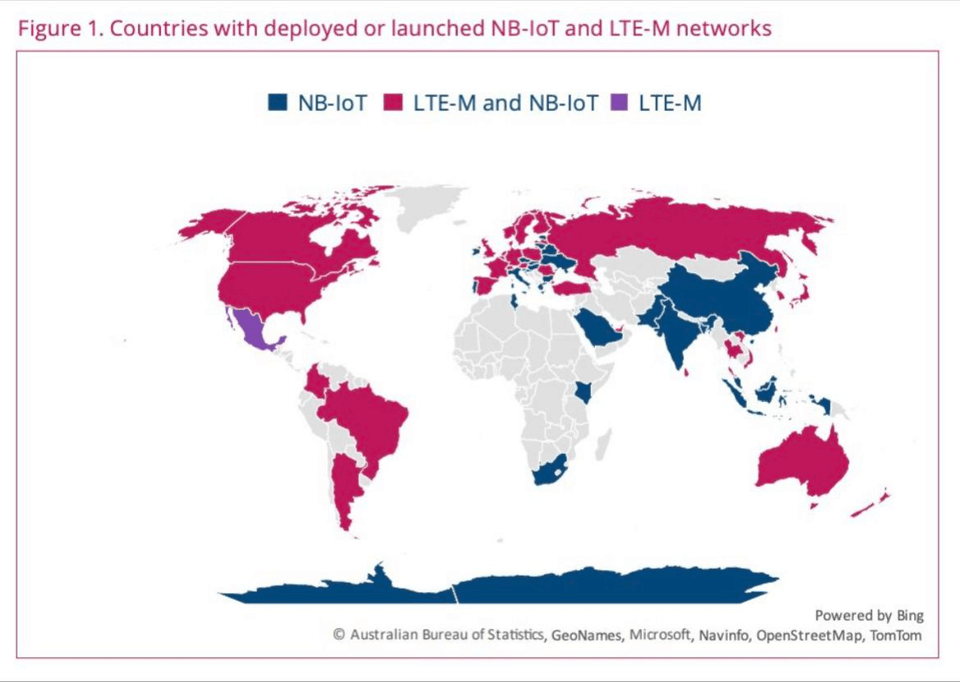Mobile communication for sensors - IoT / Internet of Things
"Narrowband IoT" is a radio standard that is intended for the Internet of Things (IoT). The problem with conventional, mostly GSM-based sensors or devices was battery operation on the one hand and connection quality on the other. GSM devices generally consume so much electricity that the radio module in the devices has mostly been switched off. With an upcoming data transmission, this had the problem that the entire, often time-consuming, network logon process again consumed a lot of electricity. There were no power saving mechanisms in the 2G modems. On the other hand, the devices were of course "offline" in the meantime and could neither be queried nor configured or even receive commands for actuators or reconfiguration. Furthermore the radio coverage is not optimal, both indoor and e.g. in basements.
NB-IoT or Cat-M1 is based on a subset of existing LTE mobile radio networks and is therefore also suitable for high quality demands on the transmission medium. Furthermore, there are several power-saving mechanisms that also allow sensors to fall into a low-power mode even for long periods. The mobile network is aware of this and tolerates it accordingly. The device / sensor is therefore not offline, but accessible most of the time - or at least during a known time period.
Comparison NB-IoT & LTE-M vs. LoRaWAN
Coverage NB-IoT & LTE-M

Open Communication Standards instead of closed ecosystems!
All NBS and XBS products with a mobile radio interface can be connected to all common platforms via standardized procols. These might be Microsoft Azure, Amazon AWS, IBM Bluemix or other open source tools like Node-RED or Thingsboard). Our devices talk e.g. MQTT, UDP-Coap in different dialects or LwM2M. You are completely free and independant from any manufacturer with these standards.NB-IoT or LTE Cat NB
NB-IoT is suitable for small amounts of data, which is not time-critical. Latencies, i.e. delays on the transmission path can take up to 10s. Urgent messages or signaling such as a fire report via NB-IoT is not possible. Non-critical applications such as temperatures, energy measurement, air quality, etc. can, however, be transferred very well. The max. bandwidth for uplink purpose (from the sensor towards the mobile radio network) is 16.9 Kbit/s and therefore more than sufficient for most applications. Voice support / speech transmission is not supported and is not useful or possible due to the latencies. NB-IoT is currently being expanded in Germany and is available across the board in some neighboring European countries.
LTE-M or LTE Cat M1
Cat-M1 is also under construction in various countries. The latency is very low at 10-15ms and the max. bandwidth in the uplink of 1 Mbit/s also allows the transport of larger amounts of data. Voice / speech transmission is also supported.

